More about: Budapest in 2 Days: everything you need to know
Budapest is nicknamed "the Paris of the East" and the appellation couldn't be more apt. If you've never been, I recommend you read our itinerary of the best things to see and do in Budapest. We've tried to concentrate on the essentials of the city.
Day 1: Start your holiday in an iconic location

Budapest is an elegant and stately city. Walking through the city centre you can feel the atmosphere typical of European capitals. This atmosphere can be felt most clearly in Gerbeaud's, a pastry shop that has stood on Vörösmarty Square since 1858. Walking through the door is like stepping into a time machine, as the wooden counter, the lamps and, more generally, most of the original decoration have been preserved.
The most traditional dishes
I'm not going to lie to you, it's a bit touristy and the prices are a bit higher compared to the city average. However, it's worth going in to feel like a 19th century bourgeois. Once here, you can taste some traditional desserts:
- Sacher, who can resist if they put this cake in front of them? I know, this dessert originated in Austria, but during the imperial era, it was also widely consumed in Hungary.
- Esterházy, a dessert named after Count Pál Antal Esterházy who served as Foreign Minister in the 19th century. It is a sponge cake with chocolate buttercream, apricot glaze and fondant icing.
- Gerbeaud, a cake made with ground walnuts, chocolate and homemade jam. It is inspired by a recipe developed by Emile Gerbeaud (a founder of the patisserie) and is simply delicious.
- Dobos, the symbolic dessert of Hungary. It is made with biscuit dough and chocolate butter cream. The last layer is covered with crunchy caramel-covered sheets. It is as beautiful as it is rich.
Day 1: Spend some time at the Monument to Hungarian Jews

After breakfast, walk towards the river and follow the signs to the Hungarian Parliament. Before you reach the centre of power, you will see some metal shoes on the banks of the Danube. This monument commemorates a page of history that no one would ever want to see again: the shooting of Hungarian Jews by the Arrow Cross, a party allied with Nazi Germany. During World War II, shoes were very valuable.
For this reason, the militia would lead their victims to the riverbank, make them take off their shoes and only then fire a deadly volley.
The memorial was inaugurated in 2005 based on an idea of film director Can Togay and sculptor Gyula Pauer. It is very sad to think that such a violent crime was perpetrated in this beautiful city in the heart of Europe. If you have enough time, you can opt for a cruise on the Danube. A number of tours start their journey on this stretch of the river.
Day 1: Walk to the Parliament
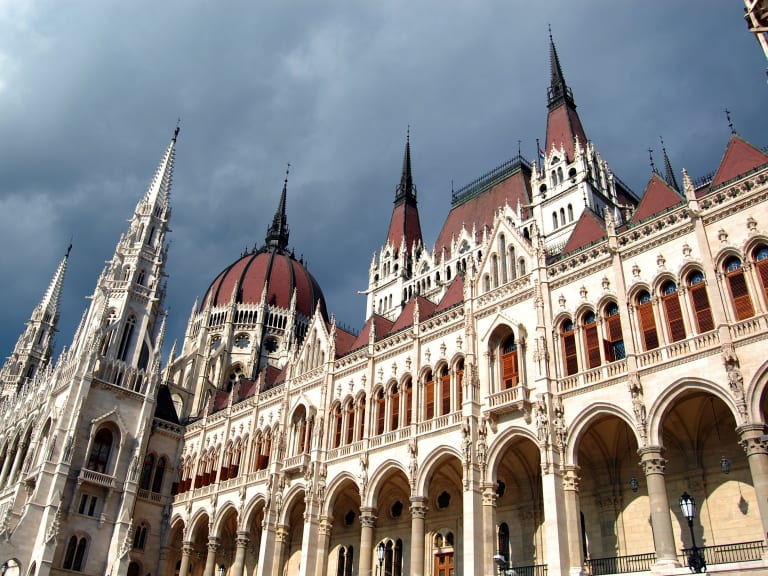
After paying tribute to the victims of Nazi barbarism, it's time to visit the third stop of the day: the Budapest Parliament. The building combines three architectural styles - neoclassical, renaissance and baroque - and is a must-see stop on any trip to Harry Houdini's city. By the way, if you are passionate about the history of the famous escapologist, I recommend you to visit the Houdini House which is located within walking distance from the Matthias Church (Mátyás-templom).
Now let's get back to business. The Parliament of Budapest is the true icon of the city and its silhouette is the typical picture on postcards and in travel guides. Built between 1884 and 1902, it is the third largest in the world and resembles the Palace of Westminster. Only Hungarian materials were used in its construction, except for the marble columns, which were brought from Sweden.
The interiors are as beautiful as the elegant façade overlooking the river, which is why I recommend booking a guided tour. Tours usually last about 45 minutes and are available in several languages, including English.
Day 1: Visit St. Stephen's Basilica
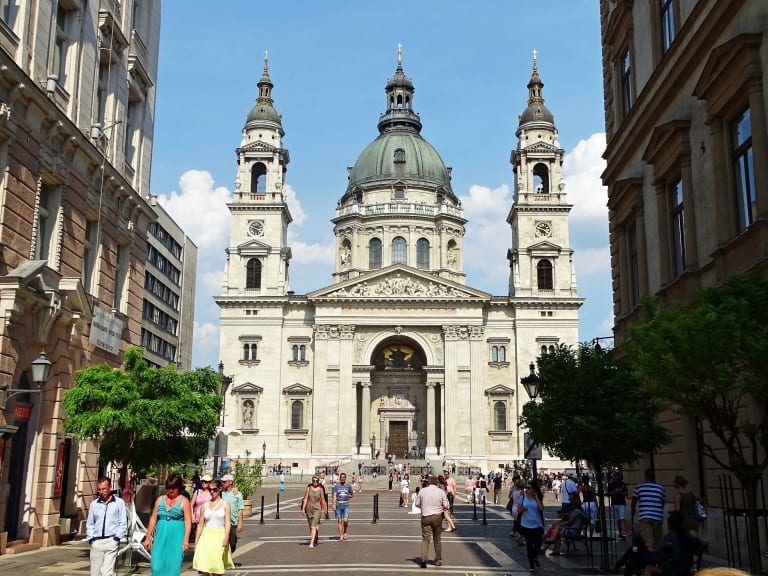
This church is the largest in Hungary and is characterised by the two towers that protect the façade. Inside is a somewhat chilling relic: the mummified hand of St. Stephen. He was the country's first king and has gone down in history as the person who converted the Magyars to Catholicism. The construction was quite complicated: it was finished in 1905 after more than half a century of work, two architects lost their lives and the dome collapsed in 1868.
If you like football and you are a Real Madrid fan, I recommend you to enter the basilica. Here you will find the tomb of a Real Madrid legend: Ferenc Puskás. The former striker also has a statue in the Óbuda district (Bécsi útca 57).
If you travel to Budapest in December, you can do a bit of Christmas shopping in the square opposite. In any case, this area is perfect for souvenir shopping and a bite to eat in the many restaurants and bars nearby. After a snack, walk to Andrássy útca.
Day 1: Ride the second oldest metro in Europe
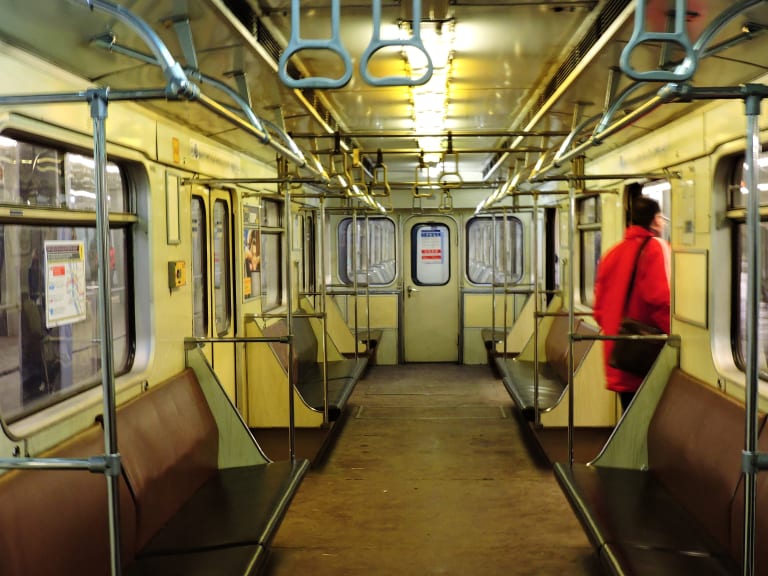
To get to the next stage, take the metro at the Bajcsy-Zsilinszky útca stop. The Hungarian capital's suburban network was only anticipated by London's and retains some original elements such as the red metal columns with floral decorations on top. Line 1 (the one you will take) was declared a World Heritage Site in 2002 forpreserving the 19th century art nouveau style. After six stops, get off at Hősök tere.
Day 1: Stroll around Heroes' Square and its surroundings
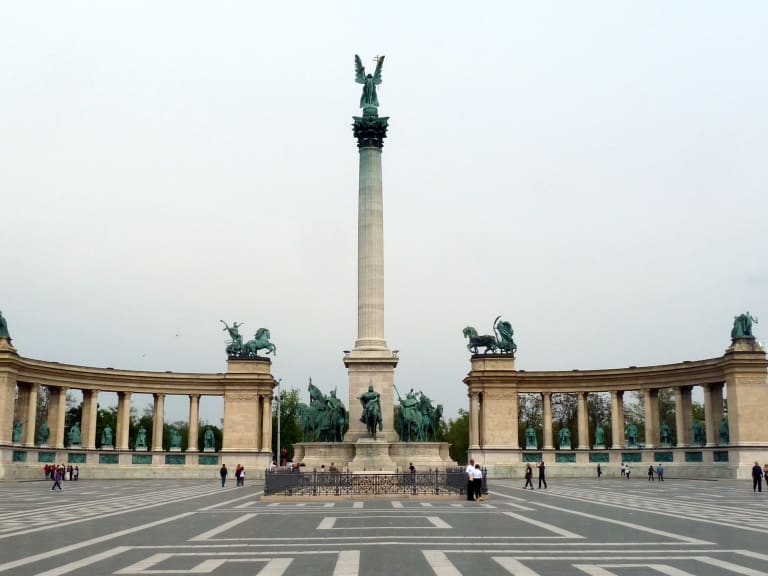
Heroes' Square (Hősök tere) is a large monumental space at the end of Andrássy útca, one of Budapest's most iconic streets. Tourists come here to see the 36-metre column topped by the Archangel Gabriel and the seven statues commemorating the leaders of Hungary's founding tribes. Snap some photos and explore the nearby streets that host some great destinations of interest:
- Museum of Fine Arts (Szépművészeti Múzeum), a cultural institution housed in an eclectic-neoclassical building. In its rooms you can admire works by Raphael, Dürer, Pieter Bruegel the Elder, Rembrandt, Goya, Toulouse-Lautrec and other artists. It is located in the Plaza de los Héroes. To find out about its temporary exhibitions, I recommend you take a look at its official website.
- Zoo and Botanical Garden, one of the oldest in Europe. If you are travelling with children, this could be a good option. The little ones will be able to see lemurs, lions, monkeys and other animals up close. You'll recognise it by its elegant entrance decorated with two stone elephants. You can check the opening hours on the zoo's website (Állatkerti krt. 6-12).
- Városliget, the municipal park. Originally a royal hunting ground, it was gradually transformed into a public garden between the 18th and 19th centuries. Inside there is an artificial lake, which in summer is crossed by small rowboats for hire. When the water freezes over, it becomes an ice rink (Kós Károly stny).
- Vajdahunyad Castle, an eclectic fortress. Built in 1890 to celebrate the 1000th anniversary of the Hungarian nation, it consists of 21 buildings of different styles (Romanesque, Gothic, Baroque and Renaissance).
Day 1: Finish the first day in the Jewish Quarter

After the walk, take the metro in the opposite direction and get off at Opera. A few minutes' walk will take you to the old Jewish Quarter. If you have the time and inclination, I recommend you book a guided tour of the Great Synagogue on Dohány Street. It was designed by the German architect Ludwig Förster in a neo-Arabic style.
After a stroll through its impressive interiors, you can have a drink there. In Budapest's old Jewish quarter you'll find Heroes' Square, which is at its best at dusk. The lights illuminating the monument and the nearby castle create a fairytale atmosphere. This is also a lively area where you can find restaurants, bars and nightclubs. For a bite to eat and a pint or a drink, you can opt for the surrounding ruin bars.
Day 2: Treat yourself to a sweet breakfast at Cirkusz

To start the day with energy, you have to have a good breakfast. Before the walk, I recommend booking a table at Cirkusz Kávéház, the Mecca of brunch. This establishment was opened in 2014 and has been a great success thanks to two factors: a roasted coffee made in house (Bagira) and a family atmosphere that makes every guest feel at home. The establishment is located in the Jewish quarter, between the synagogue on Rumbach Street and the Orthodox synagogue on Kazinczy Street.
Its most famous dishes are Egg Royal (English muffin, spinach, salmon and poached egg with hollandaise sauce), New York bagel (with marinated salmon, cream cheese and capers) and Pulled Pork Benedict (potato croquettes, slow-cooked pork, onion and poached egg with hollandaise sauce). You can also opt for some sweet recipes. Cirkusz brings delicious plain and chocolate croissants out of the oven. If you are looking for something healthier, you can opt for homemade granola with white yoghurt and fresh fruit.
Day 2: Cross the Chain Bridge

Once you've filled your stomach, head down to the Danube and cross the great river on its most iconic footbridge: the Chain Bridge. Designed by William Tierney Clark, it was inaugurated in 1849 and is the oldest bridge in the city. However, it was destroyed during the Second World War and rebuilt at the end of the conflict. It finally reopened to the public in 1949, exactly 100 years after the first ribbon was cut. You will recognise it by the two lions guarding the entrance. Legend has it that these felines will come to life if Hungary should ever be in danger.
Once on the other side of the river, you will find Clark Ádám Square and another symbol of the city: the funicular. This means of transport connects the riverbank with the top of the hill where the next stop on our journey, Buda Castle, is located. The ticket costs about 1,200 guilders (about €3.5) and the journey takes just a few minutes.
Day 2: Take the best panoramic pictures
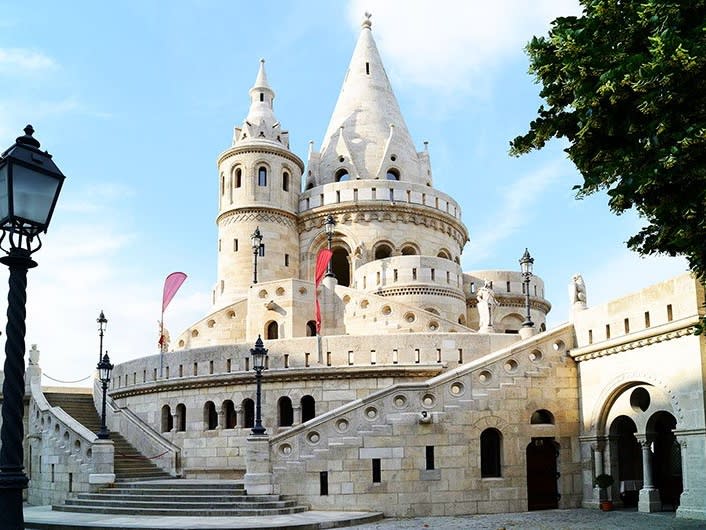
The Buda Castle was the residence of the kings of Hungary while it now houses the Széchenyi Library, the National Gallery and the Budapest History Museum. The building was looted by German and Russian troops during World War II. At the end of the conflict, the Hungarian government began a reconstruction process to restore the complex to its former glory. On the same hill are two monuments not to be missed:
- Matthias Church, the scene of the coronation of Franz Joseph I and his wife Elisabeth (Sissi). Once at its foot, look up to admire the coloured tiled roof and the 80-metre tower in openwork stone. I recommend you go inside to see its interiors which mix art nouveau, oriental influences and traditional Hungarian style.
- Fisherman's Bastion, the viewpoint on Buda Hill. Despite its name, it was originally a bastion with a defensive function. It is a very romantic place as it is a balcony overlooking Pest. From here, you can take some breathtaking pictures of the illuminated Parliament.
After the walk, walk back down to the Danube bank and take the tram from the Halász utca stop. You can take several lines (19, 41 and 56A, for example) and then get off at Rudas Gyógyfürdő.
Day 2: Relax at the Széchenyi Spa
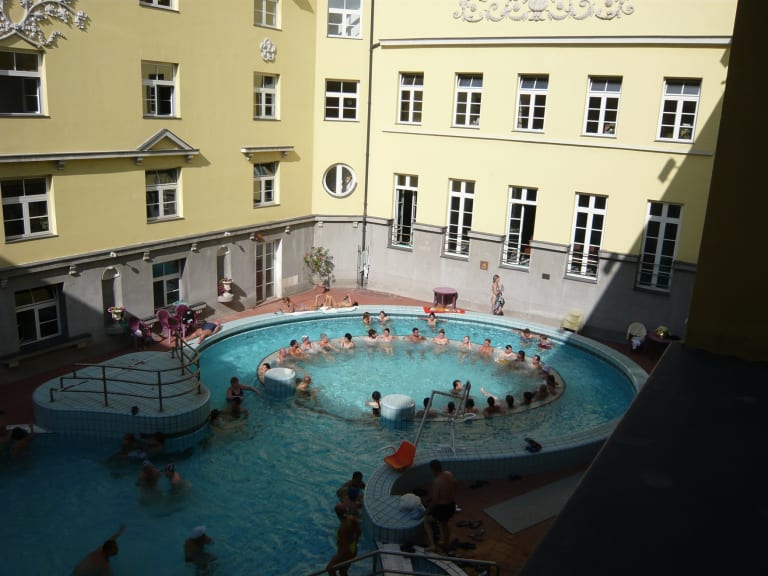
Any weekend in Budapest should include a trip to a spa. The city has a wide range of options and each has its own unique character. If you visit the Hungarian capital during the summer, you shouldbook a ticket for the Széchenyi Spa, as it's a great place to visit at this time of year. Art Nouveau enthusiasts, on the other hand, choose Gellért, a spa with large columns and balconies overlooking the main pool.
However, to follow our route we recommend a different destination: the Rudas Baths between the Danube and the hill of Gellért, founded in the 11th century, although the current structure is the result of an initial renovation during the Ottoman period and a second round of work carried out in 1896. Its distinctive feature is the octagonal pool crowned by a dome 10 metres in diameter. For a different experience, I recommend a night swim. To clarify any doubts and check prices, I recommend you take a look at the official website.
Is Budapest worth visiting in two days?

Of course it is! The Hungarian capital is not very large and if you stay in the centre you will be able to see the essentials. In my opinion, a 3-day holiday is the ideal way to explore it without too much haste. On the other hand, if you choose to stay for four or five days, you can take the opportunity to make some excursions inside or outside Hungary.
When is the best time to visit Budapest?

Personally, I consider any season to be the right one. Unlike other European capitals, the city of Houdini has attractions for all seasons: the spas.
The first time I was in Budapest was in February, a month characterised by freezing temperatures. To escape the cold, we took refuge in the Széchenyi Thermal Baths (Állatkerti krt. 9-11) whose three open-air pools are still in operation even in the dead of winter. The contrast between the warmth of the water and the fresh air is an energy boost.
Don't worry, if you're cold you can stay in the indoor pools or choose other thermal baths with indoor pools only. These same places offer relief during the summer; in fact, between June and August temperatures can reach 30ºC and the humidity rate increases the sensation of heat.
Another option for cooling off is Lupa, a beach on the lake of the same name where you can relax on sun loungers, do water sports and enjoy a cocktail. It is located in the town of Budakalász and can be reached by suburban train (HÉV) H5 to Budakalász.




